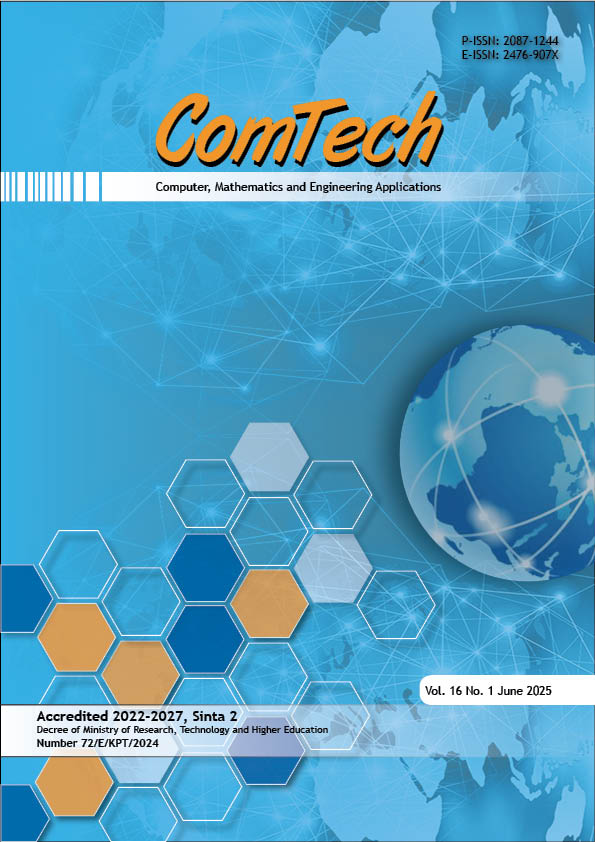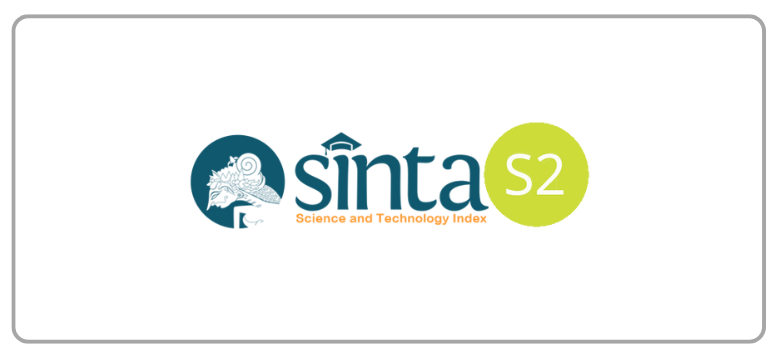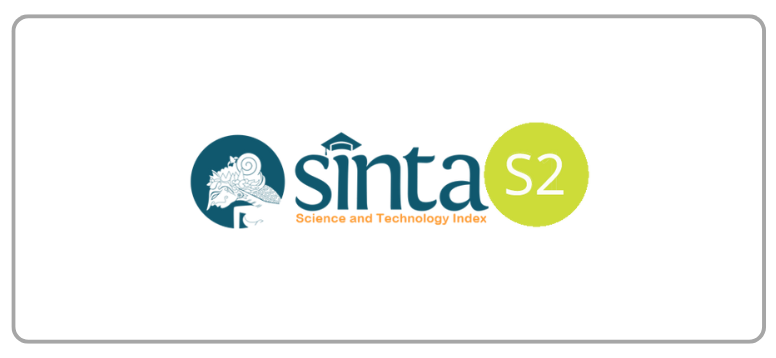A Data Mining Approach to Understanding Financial Literacy Knowledge and Behavioral Patterns among Tertiary Students
DOI:
https://doi.org/10.21512/comtech.v16i1.12221Keywords:
financial literacy knowledge, behavioral patterns, tertiary studentsAbstract
The research sought to data mine the financial literacy of tertiary students to evaluate and pinpoint deficiencies in their financial knowledge, measure the degree of financial goal-setting and budgeting practices, and determine their primary sources of financial advice. The data were gathered through validated questionnaires and disseminated through surveys. The research focused on tertiary students with 316 valid responses for analysis. The research used data mining techniques under the Cross-Industry Standard Process for Data Mining (CRISP-DM) methodology to identify students’ financial literacy. Furthermore, a comprehensive analysis using Ms Excel, Statistical Package for Social Sciences (SPSS), and Waikato Environment for Knowledge Analysis (WEKA) reveals significant disparities in financial literacy among various fields of study and course levels. The investigation highlights essential financial behaviors, such as credit card utilization, saving patterns, and budgeting strategies, while revealing deficiencies in formal financial education. The analysis highlights the necessity for specialized financial literacy initiatives in educational programs to bridge knowledge deficiencies and encourage proficient budgeting and goal-setting techniques. The results offer practical guidance for educators, policymakers, and higher education institutions to improve students’ financial well-being, in line with Sustainable Development Goals (SDGs) focused on poverty alleviation and economic development. The research advocates for financial literacy programs in the school curriculum and emphasizes enhancing student participation in workshops. Higher education institutions must provide well-structured financial advice and support services. Lastly, Future studies should delve deeper into socioeconomic factors to improve predictive models and intervention strategies.
References
Afsar, J., Chaudhary, G. M., Iqbal, Z., & Aamir, M. (2018). Impact of financial literacy and parental socialization on the saving behavior of university level students. Journal of Accounting and Finance in Emergency Economies, 4(2), 133–140. https://doi.org/10.26710/jafee.v4i2.526
Andersen, J. P. (2023). Field-level differences in paper and author characteristics across all fields of science in Web of Science, 2000–2020. Quantitative Science Studies, 4(2), 394–422. https://doi.org/10.1162/qss_a_00246
Ayele, W. Y. (2020). Adapting CRISP-DM for idea mining: A data mining process for generating ideas using a textual dataset. International Journal of Advanced Computer Sciences and Applications, 11(6), 20–32. https://doi.org/10.14569/IJACSA.2020.0110603
Badache, F., Kimber, L. R., & Maertens, L. (2023). Rethinking methods of investigation and international organizations. In International organizations and research methods: An introduction (pp. 1–15). University of Michigan Press.
Białowolski, P. (2019). Economic sentiment as a driver for household financial behavior. Journal of Behavioral and Experimental Economics, 80, 59–66. https://doi.org/10.1016/j.socec.2019.03.006
Cai, J., Luo, J., Wang, S., & Yang, S. (2018). Feature selection in machine learning: A new perspective. Neurocomputing, 300, 70–79. https://doi.org/10.1016/j.neucom.2017.11.077
Cao, X., Wang, Y., & Zhou, S. (2018). Anti-corruption campaigns and corporate information release in China. Journal of Corporate Finance, 49, 186–203. https://doi.org/10.1016/j.jcorpfin.2018.01.008
Carpena, F., Cole, S., Shapiro, J., & Zia, B. (2019). The ABCs of financial education: Experimental evidence on attitudes, behavior, and cognitive biases. Management Science, 65(1), 346–369. https://doi.org/10.1287/mnsc.2017.2819
Chambers, D., Simpson, L., Neta, G., Schwarz, U. V. T., Percy-Laurry, A., Aarons, G. A., ... & Jones, E. (2017). Proceedings from the 9th annual conference on the science of dissemination and implementation. In Implementation Science, 12, 1–55. https://doi.org/10.1186/s13012-017-0575-y
Da Costa, J. F. P., & Cabral, M. (2022). Statistical methods with applications in data mining: A review of the most recent works. Mathematics, 10(6), 1–22. https://doi.org/10.3390/math10060993
Dwivedi, Y. K., Hughes, L., Ismagilova, E., Aarts, G., Coombs, C., Crick, T., ... & Williams, M. D. (2021). Artificial Intelligence (AI): Multidisciplinary perspectives on emerging challenges, opportunities, and agenda for research, practice and policy. International Journal of Information Management, 57. https://doi.org/10.1016/j.ijinfomgt.2019.08.002
Feng, X., Lu, B., Song, X., & Ma, S. (2019). Financial literacy and household finances: A Bayesian two-part latent variable modeling approach. Journal of Empirical Finance, 51, 119–137. https://doi.org/10.1016/j.jempfin.2019.02.002
Grohmann, A., Hübler, O., Kouwenberg, R., & Menkhoff, L. (2021). Financial literacy: Thai middle-class women do not lag behind. Journal of Behavioral and Experimental Finance, 31. https://doi.org/10.1016/j.jbef.2021.100537
Gupta, K., Kumar, P., & Upadhyaya, S. (2022). Comparative analysis of different machine learning classifiers for the prediction of chronic diseases. In Intelligent Systems-Proceedings of ICIS-2022 (pp. 1–7). https://doi.org/10.13052/rp-9788770227667
Herzalla, D., Lunardi, W. T., & Andreoni, M. (2023). TII-SSRC-23 dataset: Typological exploration of diverse traffic patterns for intrusion detection. IEEE Access, 11, 118577–118594. https://doi.org/10.1109/ACCESS.2023.3319213
Johri, A., Islam, M. U., & Kamal, M. (2023). Assessment of financial literacy and its impact on investor’s decisions in Saudi Arabia: A study in the context of enabling financial planning to strengthen economic development. Discrete Dynamics in Nature and Society, 2023(1). https://doi.org/10.1155/2023/9932444
Kamalov, F., Santandreu Calonge, D., & Gurrib, I. (2023). New era of artificial intelligence in education: Towards a sustainable multifaceted revolution. Sustainability, 15(16), 1–27. https://doi.org/10.3390/su151612451
Khadjesari, Z., Boufkhed, S., Vitoratou, S., Schatte, L., Ziemann, A., Daskalopoulou, C., ... & Hull, L. (2020). Implementation outcome instruments for use in physical healthcare settings: A systematic review. Implementation Science, 15, 1–16. https://doi.org/10.1186/s13012-020-01027-6
Koohang, A., Nord, J. H., Ooi, K. B., Tan, G. W. H., Al-Emran, M., Aw, E. C. X., ... & Wong, L. W. (2023). Shaping the metaverse into reality: A holistic multidisciplinary understanding of opportunities, challenges, and avenues for future investigation. Journal of Computer Information Systems, 63(3), 735–765. https://doi.org/10.1080/08874417.2023.2165197
Kotsila, P., Anguelovski, I., García-Lamarca, M., & Sekulova, F. (2022). Injustice in urban sustainability. Routledge. https://doi.org/10.4324/9781003221425
Kumar, S., Rao, S., Goyal, K., & Goyal, N. (2022). Journal of Behavioral and Experimental Finance: A bibliometric overview. Journal of Behavioral and Experimental Finance, 34, 1–19. https://doi.org/10.1016/j.jbef.2022.100652
Lotfollahi, M., Naghipourfar, M., Luecken, M. D., Khajavi, M., Büttner, M., Wagenstetter, M., ... & Theis, F. J. (2022). Mapping single-cell data to reference atlases by transfer learning. Nature Biotechnology, 40, 121–130. https://doi.org/10.1038/s41587-021-01001-7
Lusardi, A., & Mitchell, O. S. (2017). How ordinary consumers make complex economic decisions: Financial literacy and retirement readiness. The Quarterly Journal of Finance, 7(3), 1–31. https://doi.org/10.1142/S2010139217500082
Martínez-Plumed, F., Contreras-Ochando, L., Ferri, C., Hernández-Orallo, J., Kull, M., Lachiche, N., ... & Flach, P. (2021). CRISP-DM twenty years later: From data mining processes to data science trajectories. IEEE Transactions on Knowledge and Data Engineering, 33(8), 3048–3061. https://doi.org/10.1109/TKDE.2019.2962680
Naghib, A., Jafari Navimipour, N., Hosseinzadeh, M., & Sharifi, A. (2023). A comprehensive and systematic literature review on the big data management techniques in the Internet of Things. Wireless Networks, 29(3), 1085–1144. Springer US. https://doi.org/10.1007/s11276-022-03177-5
Page, M. J., Moher, D., Bossuyt, P. M., Boutron, I., Hoffmann, T. C., Mulrow, C. D., ... & McKenzie, J. E. (2021). PRISMA 2020 explanation and elaboration: Updated guidance and exemplars for reporting systematic reviews. BMJ, 2021, 1–36. https://doi.org/10.1136/bmj.n160
Pham, T. H., Ho, M. T., Vuong, T. T., Nguyen, M. C., & Vuong, Q. H. (2020). Entrepreneurial finance: Insights from english language training market in Vietnam. Journal of Risk and Financial Management, 13(5), 1–23. https://doi.org/10.3390/jrfm13050096
Prempeh, A., Osei, B., & Osei, F. (2024). Financial literacy and saving behaviour among tertiary students. Journal of Business Management and Accounting, 14(1), 115–142. https://doi.org/10.32890/jbma2024.14.1.5
Rudd, D. H., Huo, H., & Xu, G. (2022). Predicting financial literacy via semi-supervised learning. In Australasian Joint Conference on Artificial Intelligence (pp. 304–319). Springer International Publishing. https://doi.org/10.1007/978-3-030-97546-3_25
Ruiz-Palomo, D., Galache-Laza, M. T., Cisneros-Ruiz, A. J., & García-Lopera, F. (2023). Financial knowledge of pre-university students: Effects of age and gender. Heliyon, 9(4), 1–10. https://doi.org/10.1016/j.heliyon.2023.e15440
Sai, S., Gaur, A., Sai, R., Chamola, V., Guizani, M., & Rodrigues, J. J. P. C. (2024). Generative AI for transformative healthcare: A comprehensive study of emerging models, applications, case studies, and limitations. IEEE Access, 12, 31078–31106. https://doi.org/10.1109/ACCESS.2024.3367715
Schmidt, J., Marques, M. R. G., Botti, S., & Marques, M. A. L. (2019). Recent advances and applications of machine learning in solid-state materials science. Npj Computational Materials, 5, 1–36. https://doi.org/10.1038/s41524-019-0221-0
Schröer, C., Kruse, F., & Gómez, J. M. (2021). A systematic literature review on applying CRISP-DM process model. Procedia Computer Science, 181, 526–534. https://doi.org/10.1016/j.procs.2021.01.199
Tõnurist, P., & Hanson, A. (2020). Anticipatory innovation governance: Shaping the future through proactive policy making. In OECD Working Papers on Public Governance. OECD Publishing. https://doi.org/10.1787/cce14d80-en
Vermesan, O., Eisenhauer, M., Sundmaeker, H., Guillemin, P., Serrano, M., Tragos, E. Z., ... & Bahr, R. (2017). Internet of things cognitive transformation technology research trends and applications. In O. Vermesan & J. Bacquet (Eds.), Cognitive hyperconnected digital transformation (pp. 17–95). River Publishers. https://doi.org/10.1201/9781003337584-3
Yeboah, C., Acquah, A., & Shelley, K. (2024). Evaluating the impact of education policy reforms on financial literacy: A meta-analysis of financial education initiatives in U.S. schools. International Journal of Social Policy and Education, 6(3), 60–72. https://doi.org/10.61494/ijspe.v6n3a7
Zaimovic, A., Torlakovic, A., Arnaut-Berilo, A., Zaimovic, T., Dedovic, L., & Nuhic Meskovic, M. (2023). Mapping financial literacy: A systematic literature review of determinants and recent trends. Sustainability, 15(12), 1–30. https://doi.org/10.3390/su15129358
Downloads
Published
How to Cite
Issue
Section
License
Copyright (c) 2025 Maricris M. Usita, Virgie Liza Luriban

This work is licensed under a Creative Commons Attribution-ShareAlike 4.0 International License.
Authors who publish with this journal agree to the following terms:
a. Authors retain copyright and grant the journal right of first publication with the work simultaneously licensed under a Creative Commons Attribution License - Share Alike that allows others to share the work with an acknowledgment of the work's authorship and initial publication in this journal.
b. Authors are able to enter into separate, additional contractual arrangements for the non-exclusive distribution of the journal's published version of the work (e.g., post it to an institutional repository or publish it in a book), with an acknowledgment of its initial publication in this journal.
c. Authors are permitted and encouraged to post their work online (e.g., in institutional repositories or on their website) prior to and during the submission process, as it can lead to productive exchanges, as well as earlier and greater citation of published work.
 USER RIGHTS
 All articles published Open Access will be immediately and permanently free for everyone to read and download. We are continuously working with our author communities to select the best choice of license options, currently being defined for this journal as follows:




















